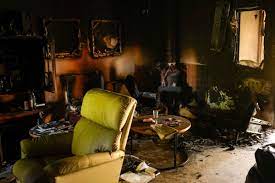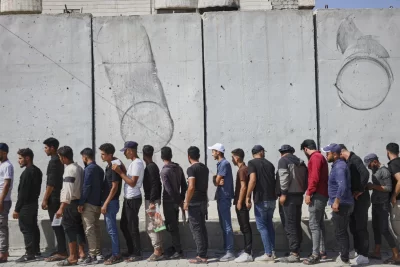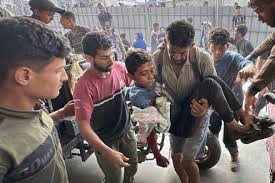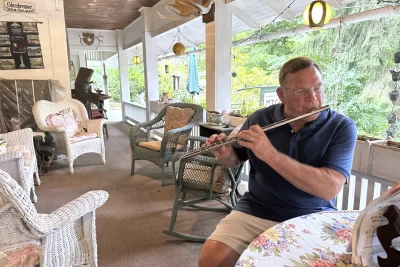
Nearly two weeks after Hamas militants left his village scorched and shattered, Shachar Butler returned to bury a friend who was slain. But it was the town itself, a quarter of its residents dead or missing, that he eulogized.
“It was the happiest place alive. It was a green place, with animals and birds and kids running around,” Butler said Thursday, standing in a landscape of ransacked homes and bullet-riddled cars, the heat thick with the odor of death.
“They burned the houses while the people were inside,” said Butler, a father of three who spent hours trading gunfire with militants on Oct. 7. “The people who came out are the people who got kidnapped, killed, executed, slaughtered. … It’s unimaginable. It’s just unimaginable.”
Nir Oz is one of more than 20 towns and villages in southern Israel that were ambushed in the sweeping assault by Hamas launched from the embattled Gaza Strip. In many, the devastation left behind is shocking. But even in that company, it is clear that this kibbutz, set on a low rise overlooking the border fence with Gaza, suffered a particularly harsh toll.
On Thursday, the Israeli military and a pair of surviving residents led a group of journalists, including an Associated Press reporter, on a tour of the battered village.
Now, it is virtually devoid of the people who gave it life.
Authorities are still trying to identify bodies. Residents say fully a quarter of the town’s population fell victim to the attack. More than two dozen have been confirmed dead, and dozens of others are believed to be among the roughly 200 people taken to Gaza as captives.
On Thursday, the Israeli army released what it said was a manual used by militants outlining methods for taking hostages. It included instructions to light tires outside the heavy metal doors of safe rooms that are built into many Israeli homes to smoke people out.
The manual’s contents could not be independently verified, and it wasn’t known if any were used by the estimated 200 militants who invaded Nir Oz.
In all, about 100 people from Nir Oz are dead or missing, said Ron Bahat, 57, who was born in the kibbutz and has spent most of his life here. He recounted how militants tried repeatedly to break into the safe room where he and his family barricaded themselves during the attack.
“Luckily we were able to hold the door. I was holding the door, my wife holding the windows, and luckily we survived,” he said.
On a walk through Nir Oz, signs of life cut short are everywhere. Ceiling fans still spin lazily inside some ruined homes. A tub of homemade cookies sits uneaten on a kitchen table in one. A tricycle and toys are scattered across the front-yard grass of another.
“Home. Dream. Love,” reads a sign that still hangs on the wall of yet another home left vacant.
But destruction overwhelms those reminders of domesticity. Alongside a grove of pines, the windows of nearly 20 cars are shot out, with the Arabic word for Palestine spray-painted in orange across many. A trail of blood curls through one home, stretching through the battered doorway of its safe room. In another, bloodstains sit near an overturned crib.
Bahat said that some surviving residents plan to return eventually. But the Nir Oz that used to be is gone, he and Butler said.
“I lost many friends,” Butler said. “We worked the fields until the last yard and always hoping that maybe one day there’s going to be something peaceful … between us and the other side.”
Long before the attack, he said, on days when the kibbutz’s air raid siren warned of rocket fire from Gaza, holding on to that dream wasn’t easy.
But nowhere near as hard as it is now.
___
Associated Press writer Adam Geller contributed from New York.







